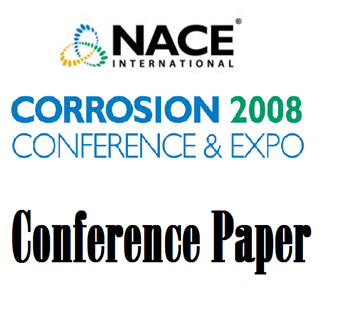Search
08513 Application of DGGE and FISH to Seawater Injection Systems
Also Purchased
08516 Replacing Corroded and Failed Metallic Pipe with Corrosion Resistant FRP Pipe, Design and Installation Requirements and a Case History
Product Number:
51300-08516-SG
ISBN:
08516 2008 CP
Publication Date:
2008
$20.00
08515 HDPE Solves Alkylation Sewer Corrosion Problems in Refinery
Product Number:
51300-08515-SG
ISBN:
08515 2008 CP
Publication Date:
2008
$20.00
08508 MIC in Fire Sprinkler Systems - Field Observations and Data
Product Number:
51300-08508-SG
ISBN:
08508 2008 CP
Publication Date:
2008
$20.00
Recently viewed




